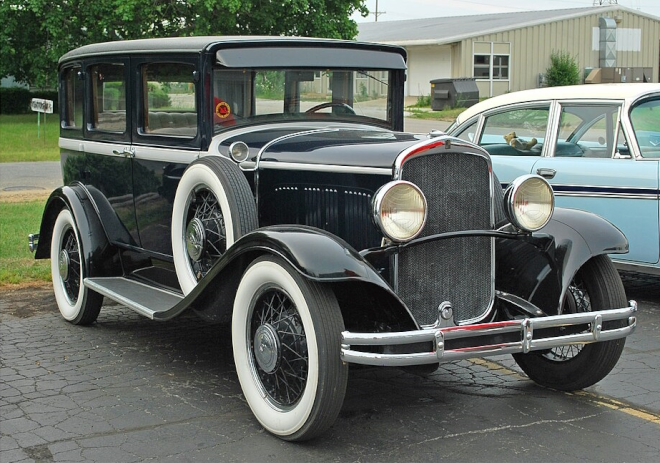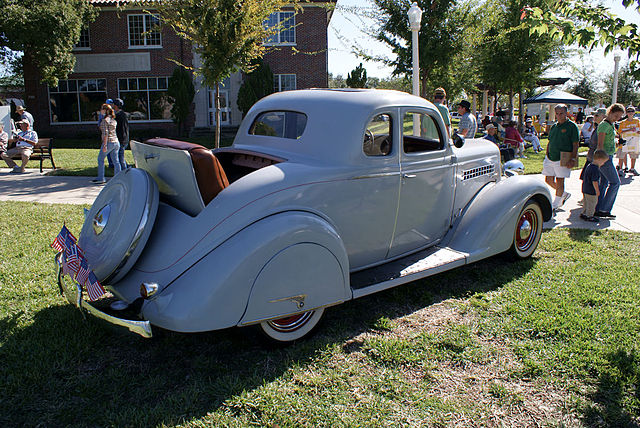
The DeSoto Six Series K, spanning from 1928 to 1941, is a remarkable chapter in the history of American automobiles. Named after the Spanish explorer Hernando de Soto, the DeSoto brand was introduced by Chrysler in 1928 to compete in the mid-priced market.
This model, characterized by its engineering and stylish design, reflects the dynamic changes in automotive technology and consumer preferences during the period before World War II.
This article delves into the rich history and enduring legacy of the DeSoto Six Series K.
Introduction to the DeSoto Brand and the Six Series K

The DeSoto brand was established by Walter P. Chrysler with the intention of filling a gap in the market between the low-priced Plymouth and the more luxurious Chrysler models. The DeSoto Six made its debut as part of this new brand’s lineup. As a full-size car, it was initially launched to offer a balanced combination of performance, style, and value for money, which it successfully delivered throughout its production years.
The Series K model of the DeSoto Six, specifically introduced in the early 1930s, was part of DeSoto’s strategy to rejuvenate its offerings during the Great Depression. The Series K featured significant improvements in both engineering and design, aimed at attracting buyers who desired both reliability and elegance without a hefty price tag.
The car featured a powerful six-cylinder engine, which became a staple for the model and was a major selling point for the brand.
This model series not only enhanced DeSoto’s reputation but also helped Chrysler to stabilize its finances during tough economic times by capturing a significant share of the mid-priced automobile segment.
Design and Engineering Innovations

The DeSoto Six was notable for its engineering innovations, which included advancements in engine performance and vehicle comfort. The engine of the DeSoto Six Series K was a flathead six-cylinder that offered a smooth and robust performance, suitable for the era’s road conditions.
This engine was capable of delivering sufficient power while maintaining reasonable fuel efficiency, which was a considerable achievement during that time.
In terms of design, the DeSoto Six was ahead of its time. It featured a stylish exterior with graceful lines that exuded a sense of motion even when the car was stationary. The car’s interior was equally impressive, offering spacious seating and luxury features that were uncommon in cars within its price range.
Safety features, though basic by today’s standards, began to be integrated into the design during the late 1930s, reflecting the growing awareness of passenger safety.
The attention to both aesthetic and functional details helped the DeSoto Six Series K stand out in a crowded marketplace and solidified its place as a desirable family car.
Market Impact and Consumer Reception

Upon its release, the DeSoto Six Series K quickly gained popularity among American consumers. It was praised for its combination of style, comfort, and performance at a price that was accessible to many middle-class families. The car’s appeal was broad, attracting customers ranging from small business owners to families looking for a dependable and attractive vehicle.
During its production years, the DeSoto Six helped Chrysler to capture a larger market share in the mid-priced segment. Its success during the late 1920s and 1930s can be attributed to Chrysler’s strategic marketing and continuous improvements in both performance and design, which resonated well with the economic and social conditions of the time.
The popularity of the DeSoto Six also reflected the changing dynamics of the American automobile market, where consumers increasingly valued a combination of luxury and practicality.
Challenges and Competitions

Despite its successes, the DeSoto Six Series K faced significant challenges, particularly from competitors within the mid-priced market segment. Brands like Pontiac, Hudson, and Studebaker were also vying for the attention of the same demographic, each with its unique offerings.
The competitive environment pushed DeSoto to continually innovate and adapt its models to keep up with consumer expectations and technological advancements.
The onset of World War II further impacted DeSoto’s production as the automotive industry shifted towards supporting the war effort. This shift marked the end of the Series K as focus turned away from consumer automobiles to military needs, highlighting a pivotal moment in DeSoto’s history.
Legacy and End of Production
The legacy of the DeSoto Six Series K is significant as it encapsulates a period of growth and transformation in the automotive industry. Its production run, which ended as the world shifted into wartime production, marks an era of innovation that influenced future automotive designs and technologies.
The discontinuation of the DeSoto Six Series K in 1941 did not diminish its impact. It remains a cherished model among classic car enthusiasts and collectors, celebrated for its innovative design and historical significance. The DeSoto Six Series K not only tells the story of a brand striving to combine affordability with luxury but also serves as a reflection of the American spirit during a transformative period in history.
